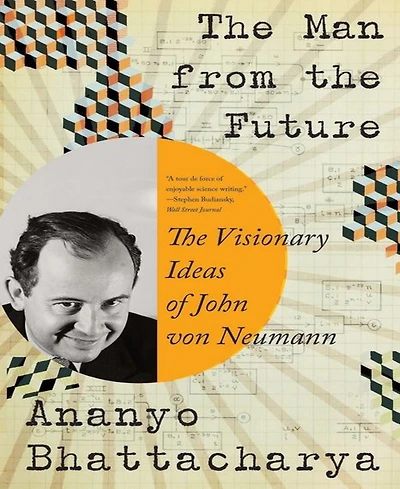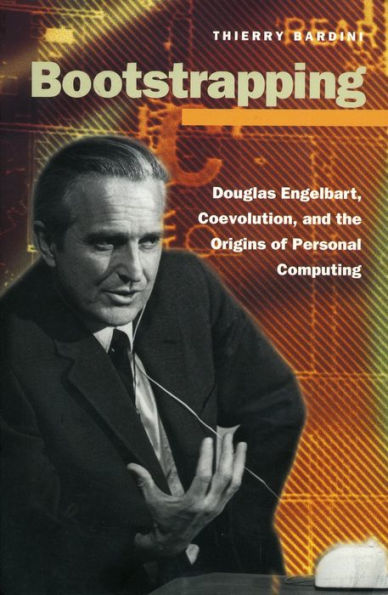Home
John von Neumann and the Origins of Modern Computing
Barnes and Noble
Loading Inventory...
John von Neumann and the Origins of Modern Computing in Franklin, TN
Current price: $40.00

Barnes and Noble
John von Neumann and the Origins of Modern Computing in Franklin, TN
Current price: $40.00
Loading Inventory...
Size: OS
William Aspray provides the first broad and detailed account of von Neumann's many different contributions to computing.
John von Neumann (1903-1957) was unquestionably one of the most brilliant scientists of the twentieth century. He made major contributions to quantum mechanics and mathematical physics and in 1943 began a new and all-too-short career in computer science. William Aspray provides the first broad and detailed account of von Neumann's many different contributions to computing. These, Aspray reveals, extended far beyond his well-known work in the design and construction of computer systems to include important scientific applications, the revival of numerical analysis, and the creation of a theory of computing.Aspray points out that from the beginning von Neumann took a wider and more theoretical view than other computer pioneers. In the now famous EDVAC report of 1945, von Neumann clearly stated the idea of a stored program that resides in the computer's memory along with the data it was to operate on. This stored program computer was described in terms of idealized neurons, highlighting the analogy between the digital computer and the human brain. Aspray describes von Neumann's development during the next decade, and almost entirely alone, of a theory of complicated information processing systems, or automata, and the introduction of themes such as learning, reliability of systems with unreliable components, self-replication, and the importance of memory and storage capacity in biological nervous systems; many of these themes remain at the heart of current investigations in parallel or neurocomputing.Aspray allows the record to speak for itself. He unravels an intricate sequence of stories generated by von Neumann's work and brings into focus the interplay of personalities centered about von Neumann. He documents the complex interactions of science, the military, and business and shows how progress in applied mathematics was intertwined with that in computers.
William Aspray is Director of the Center for the History of Electrical Engineering at The Institute of Electrical and Electronics Engineers.
John von Neumann (1903-1957) was unquestionably one of the most brilliant scientists of the twentieth century. He made major contributions to quantum mechanics and mathematical physics and in 1943 began a new and all-too-short career in computer science. William Aspray provides the first broad and detailed account of von Neumann's many different contributions to computing. These, Aspray reveals, extended far beyond his well-known work in the design and construction of computer systems to include important scientific applications, the revival of numerical analysis, and the creation of a theory of computing.Aspray points out that from the beginning von Neumann took a wider and more theoretical view than other computer pioneers. In the now famous EDVAC report of 1945, von Neumann clearly stated the idea of a stored program that resides in the computer's memory along with the data it was to operate on. This stored program computer was described in terms of idealized neurons, highlighting the analogy between the digital computer and the human brain. Aspray describes von Neumann's development during the next decade, and almost entirely alone, of a theory of complicated information processing systems, or automata, and the introduction of themes such as learning, reliability of systems with unreliable components, self-replication, and the importance of memory and storage capacity in biological nervous systems; many of these themes remain at the heart of current investigations in parallel or neurocomputing.Aspray allows the record to speak for itself. He unravels an intricate sequence of stories generated by von Neumann's work and brings into focus the interplay of personalities centered about von Neumann. He documents the complex interactions of science, the military, and business and shows how progress in applied mathematics was intertwined with that in computers.
William Aspray is Director of the Center for the History of Electrical Engineering at The Institute of Electrical and Electronics Engineers.
William Aspray provides the first broad and detailed account of von Neumann's many different contributions to computing.
John von Neumann (1903-1957) was unquestionably one of the most brilliant scientists of the twentieth century. He made major contributions to quantum mechanics and mathematical physics and in 1943 began a new and all-too-short career in computer science. William Aspray provides the first broad and detailed account of von Neumann's many different contributions to computing. These, Aspray reveals, extended far beyond his well-known work in the design and construction of computer systems to include important scientific applications, the revival of numerical analysis, and the creation of a theory of computing.Aspray points out that from the beginning von Neumann took a wider and more theoretical view than other computer pioneers. In the now famous EDVAC report of 1945, von Neumann clearly stated the idea of a stored program that resides in the computer's memory along with the data it was to operate on. This stored program computer was described in terms of idealized neurons, highlighting the analogy between the digital computer and the human brain. Aspray describes von Neumann's development during the next decade, and almost entirely alone, of a theory of complicated information processing systems, or automata, and the introduction of themes such as learning, reliability of systems with unreliable components, self-replication, and the importance of memory and storage capacity in biological nervous systems; many of these themes remain at the heart of current investigations in parallel or neurocomputing.Aspray allows the record to speak for itself. He unravels an intricate sequence of stories generated by von Neumann's work and brings into focus the interplay of personalities centered about von Neumann. He documents the complex interactions of science, the military, and business and shows how progress in applied mathematics was intertwined with that in computers.
William Aspray is Director of the Center for the History of Electrical Engineering at The Institute of Electrical and Electronics Engineers.
John von Neumann (1903-1957) was unquestionably one of the most brilliant scientists of the twentieth century. He made major contributions to quantum mechanics and mathematical physics and in 1943 began a new and all-too-short career in computer science. William Aspray provides the first broad and detailed account of von Neumann's many different contributions to computing. These, Aspray reveals, extended far beyond his well-known work in the design and construction of computer systems to include important scientific applications, the revival of numerical analysis, and the creation of a theory of computing.Aspray points out that from the beginning von Neumann took a wider and more theoretical view than other computer pioneers. In the now famous EDVAC report of 1945, von Neumann clearly stated the idea of a stored program that resides in the computer's memory along with the data it was to operate on. This stored program computer was described in terms of idealized neurons, highlighting the analogy between the digital computer and the human brain. Aspray describes von Neumann's development during the next decade, and almost entirely alone, of a theory of complicated information processing systems, or automata, and the introduction of themes such as learning, reliability of systems with unreliable components, self-replication, and the importance of memory and storage capacity in biological nervous systems; many of these themes remain at the heart of current investigations in parallel or neurocomputing.Aspray allows the record to speak for itself. He unravels an intricate sequence of stories generated by von Neumann's work and brings into focus the interplay of personalities centered about von Neumann. He documents the complex interactions of science, the military, and business and shows how progress in applied mathematics was intertwined with that in computers.
William Aspray is Director of the Center for the History of Electrical Engineering at The Institute of Electrical and Electronics Engineers.

















